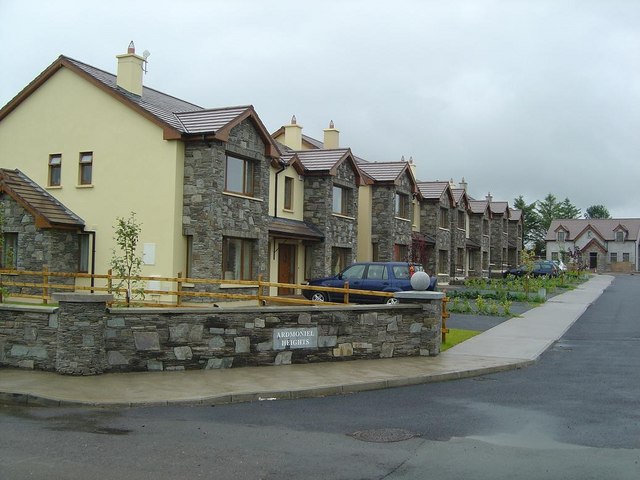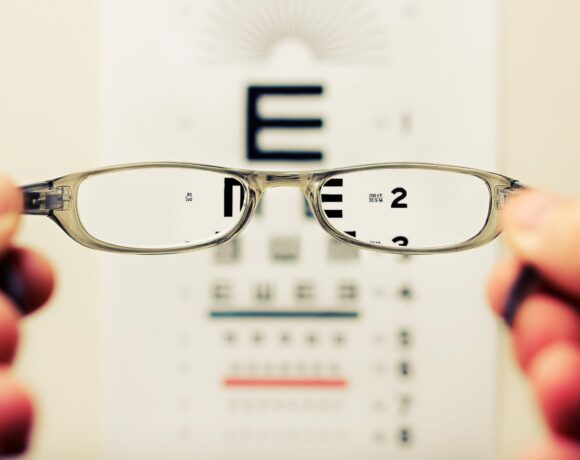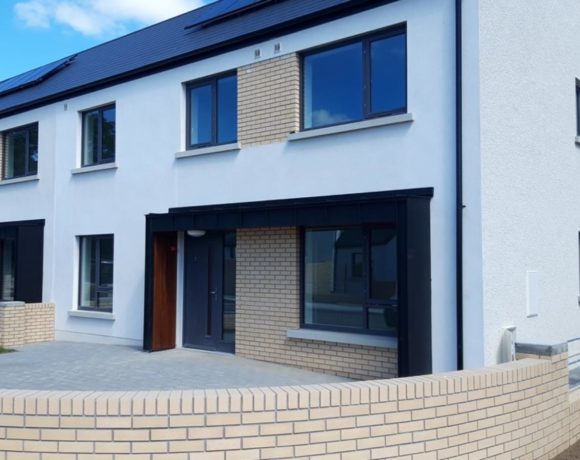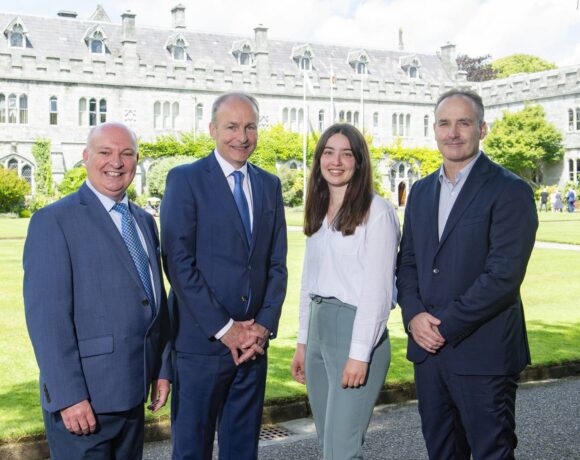Irish homes use 7% more energy and emit almost 60% more carbon than the average EU home due to reliance on fossil fuels and often low energy efficiency performance. With the move towards home working resulting in more energy use within households, it is crucial that we takes steps in decarbonising our built environment. This will provide extensive social, economic, and environmental benefits in the immediate term and in the future, says Julie Stokes, Associate Director at KPMG Ireland Sustainable Futures.
The built environment is a carbon, resource and raw material intensive sector, reflected in its contribution to Ireland’s annual carbon emissions. In 2020, the built environment accounted for approximately 14% total carbon emissions, the majority of which are attributed to the residential sector. It is not all bad news however, with a downward trend in carbon emissions per household seen over the past decade, primarily as a result of continued strengthening and improvement of Ireland’s building regulations and standards, including the Nearly Zero Energy Buildings (NZEB) energy performance requirements for new buildings, the shift from coal and peat to oil and gas heating, as well as improved efficiency of existing building stock through government support schemes.
Built Environment in the Climate Action Plan
Although some progress has been made, decarbonising the built environment, especially the existing stock of residential and commercial buildings, is one of the greatest challenges facing Ireland on its journey to net zero. To reach Ireland’s economy wide 2030 interim target of 51% emissions reduction by 2030, the built environment needs to reduce its carbon footprint to 4-5 MtCO2e compared to 2018 baseline (7.9 MtCO2e). This, in turn, will require a suite of actions to realise this level of emissions reduction, as set out in the Climate Action Plan 2021 (CAP21), including:
1. A New Retrofit Delivery Framework
A key element of the CAP21 to decarbonise the building sector is the commitment to deliver the equivalent of 500,000 homes retrofitted to a BER of B2/cost optimal or carbon equivalent, and the installation of 400,000 heat pumps in existing premises, by the end of 2030. Currently, almost half of the Irish housing stock has a BER of D1 or worse, and only 10% is B2 or better. To meet the targets set, it will be necessary to bring 40% of homes up to a BER B2 or better standard, and to improve the energy rating of a significant portion of the remainder of the residential building stock. These targets are ambitious and are challenged by funding availability, existing market fragmentation and the availability of skilled labour. As such, CAP21 sets out a National Retrofit Plan that aims to deliver the conditions required to achieve these targets – focusing on demand, funding, supply chain and skills, and governance.
2. Phasing out Fossil Fuels by 2050 in Buildings
A complete phase out of fossil fuels in the building sector is necessary for Ireland to reach net-zero. However, it is imperative that this is done with sufficient notice so that industry, consumers, and regulators can prepare and avoid investment in technology that will eventually be phased out. The CAP21 therefore proposes that research is carried out to inform the development of options, policies and measures to decarbonising the heating and cooling sectors to 2050 and thereby develop proposals to achieve complete fossil fuel phase out. With approximately 400,000 new homes expected to be built by 2030, it is imperative that fossil fuels are effectively phased out to ensure the built environment does not exceed its allocated carbon budget.
3. Decarbonising Commercial Buildings
The CAP21 sets a target of deploying zero-carbon heating to meet the needs of 50,000 typical commercial buildings. Moreover, the CAP21 proposes a suite of measures to support and incentivise increased energy efficiency and decarbonisation of commercial buildings, including providing capital funding, implementing a revised Energy Efficiency Obligation Scheme for 2022, and building on the OPW/SEAI pilot project for the retrofitting of traditional buildings, to name a few. It is estimated that improving the energy efficiency of the non-residential sector by 20% and increasing the proportion of renewable electricity in the grid to 80% would achieve the Government’s 2030 decarbonisation target of 51% for the non-residential sector.
4. District Heating
The CAP21 sets a delivery target of up to 2.7 TWh of district heating. District heating offers the potential to supply low- and zero-carbon heat to homes, business, and public buildings from a central source. Work is currently underway to inform the development of district heating policy, and there are two district heating projects in development in Tallaght and Dublin City.
5. Promoting Low Carbon Construction
Reduction targets will not be achieved through operational energy efficiencies (including those mentioned above) alone. The impact of the building construction stage on carbon emissions, or embodied carbon, is an important part of the solution. As building operational energy and related carbon emissions reduce, the proportional impact of embodied carbon becomes increasingly significant. As such, the CAP21 refers to a number of actions to promote low carbon construction, including working with key industry players to increase the use of low carbon materials; support the development of a tool for early design stage comparative analysis of embodied carbon in typical Irish construction typologies; and, design and construct two exemplar public sector buildings using alternative construction techniques and materials, and monitor their performance.
The inclusion of measures to address whole life carbon in the built environment is a crucial step change in delivering on decarbonisation for the sector. Embodied emissions associated with the built environment account for approximately 14% of Ireland’s emissions. To date, these emissions have been largely ignored. Recognising the importance of addressing embodied emissions in construction, CAP21 for the first time includes a commitment to introduce life-cycle assessment requirements for buildings and construction products and processes. This will be a key action for the sector given that built environment emissions are likely to increase by approximately 4 MtCO2e if embodied carbon levels remain consistent.
Overall, the actions set out in CAP21 for the built environment have been largely welcomed by construction, engineering and renewable energy sectors. To support and guide the decarbonisation of the built environment, the Irish Green Building Council has issued a draft roadmap for industry and government to achieve our 2030 climate targets. Now is the time to start making effective changes to our buildings and the way they use energy.
What Does This Mean for Businesses?
In the wake of the pandemic, the role employers and the office play in corporate strategy, budget and employee wellbeing is more apparent than ever. Although the pandemic has demonstrated the benefits of home working, it has also highlighted its limitations and the widespread desire for hybrid working conditions. Thus, there is an opportunity for businesses to both meet the needs of employees, create cost savings, and simultaneously reduce their impact on the environment, through the retrofitting of their property portfolio and reducing and shifting away from fossil fuel heating sources.
Retrofitting offers large financial and energy savings, as well as increased staff productivity. According to the World Green Building Council, staff performance decreases by 6% when the environment is too hot, and 4% when too cold which in turn leads to absenteeism and sickness. Employers can therefore increase employee productivity and wellbeing through the provision of well-ventilated and comfortable working environments.
Similarly, retrofitting offers reduced fossil fuel use through the introduction of energy efficiency measures. Examples of energy efficiency measure include the electrification of heating sources, lighting upgrades, and renewable energy installations. Moreover, as energy prices continue to rise, introducing energy saving measures will significantly reduce operational costs. In addition, the use of virgin raw materials for retrofitting should be limited and reduced, instead utilising low carbon materials, where possible.
Finally, in order to attract, retain and nurture top talent, a modern and flexible office space is increasingly necessary. Older buildings which do not make the necessary adjustments will suffer, potentially turning them into stranded, or at least fewer valuable assets.
Businesses should therefore actively consider their office retrofit options, which can improve productivity and employee wellbeing, reduce costs and reduce their environmental impact.
Source: KPMG Ireland













